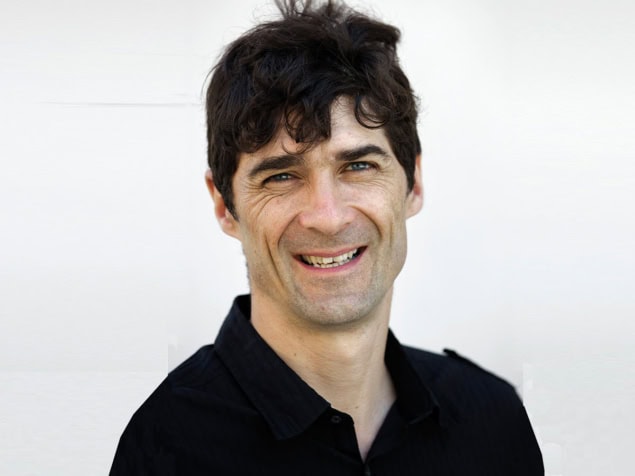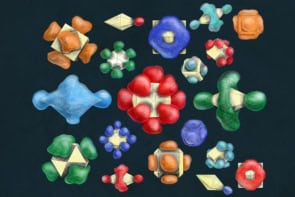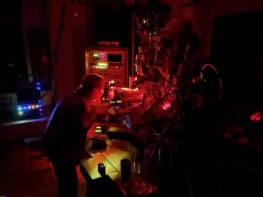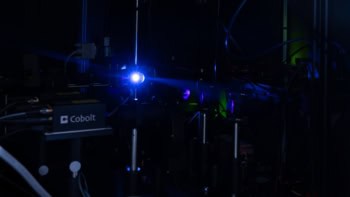Heiner Linke, director of the Nanometer Structure Consortium (nmC) at Lund University in Sweden, tells Matthew Chalmers about a new project to develop nanomaterials for energy

What is the nmC in a nutshell?
The Nanometer Structure Consortium (nmC) engages more than 200 scientists from three faculties to work on interdisciplinary nanoscience. Our scientific focus is on the materials science, physics, chemistry and safety of designed functional nanostructures, and their use in a wide range of applications including sustainable energy, optoelectronics and the life sciences. We have a particularly strong position internationally in semiconductor nanowires based on groups III and V of the periodic table.
Were you one of the first nanotechnology centres to be created?
The centre was founded in 1988 by Lars Samuelson, who led it until last year, with inspiration from the University of Glasgow and IBM Research in Zürich. In comparison, the US National Nanotechnology Initiative came along about 10 years later, so it is true that we were one of the first centres.
How has the group’s focus changed?
Throughout the past 25 years, the nmC has consistently emphasized materials science and quantum physics as its core competences. In the first decade, the scientific focus was on self-organized quantum dots and 2D electron gases. Then in around 2000 a conscious decision was made to pursue group III-V semiconductor nanowires, initially with expected applications in nanophysics research but also in electronics and optoelectronics. Over the past five years we have expanded our range of applications to include sustainable energy, neuroscience and other biomedical research. We also added a large nano-safety group that is working to understand the effects of nanowires and other nanoparticles on cells, organisms and the environment to ensure that we will be able to address any safety concerns early.
How can nanotechnology deliver cleaner energy?
Nanotechnology is about controlling and applying the new phenomena that occur at the nanoscale. In the case of nanowires, there are several such phenomena that are important for energy applications. First, they can be grown in ordered arrays, which allows them to act as photonic systems for more effective light harvesting in nanowire-based solar cells. Second, the small diameter of nanowires lets one combine different materials, even with drastically different lattice constants, into radial or axial heterostructures that may be used to create cheaper multi-junction solar cells and LEDs with higher efficiency and better colour rendering. Third, quantum-confinement effects can be used to tune the energy of photons emitted by nanowire LEDs and to enhance their thermoelectric power output. Finally, the interfaces formed in nanoscale materials can be used to control heat flow in thermal management or to suppress parasitic heat flow in thermoelectrics.
How will your PhD4Energy project help bring this about?
The project is part of the European Union’s Marie Curie Innovative Doctoral Programme and will run for four years. Worth 73.2m (about $4.46m), it will place 12 PhD students at the nmC to work on nanostructures for clean-energy applications. PhD4Energy is important for us because it adds critical mass and engages all parts of our very broad consortium of research groups, helping us to maintain a joint focus. The project ranges from applied research, such as nanowire-based solar cells, LEDs and thermoelectrics, to fundamental research on novel paradigms for nanoscale energy conversion, such as artificial molecular motors. Studies on the safety of nanowires are an integral part of the project.
What impact do you expect the project to have?
Scientific goals include studying cost-competitive, nanowire-based multi-junction solar cells, high-efficiency solid-state lighting and developing methods to increase the power output from nanoscale thermoelectrics. Each PhD student will also take up an internship with one of the eight firms that are associate partners of the project. In addition, we will collaborate closely with spin-off companies that commercialize nanowire-based devices from our environment. Specifically for LEDs, we have already created Glo and for solar cells we have Sol Voltaics.
What are the group’s long-term plans in energy research?
Using this project as a platform, we hope to build a lasting internship programme with many more participating Swedish and international companies. Scientifically, a long-term aim is to develop and then realize entirely new device paradigms that use nanophysics for efficient energy use or for energy conversion.
Has too much hope been placed on nanotechnology to solve society’s problems?
Our group has deliberately stayed away from unrealistic science-fiction dreams of what “nano” could bring – we won’t see true nanobots, for example. But the emerging approaches for drug delivery, diagnostics and therapy achieve things that were hard to imagine 25 years ago. Also, the way that information technology has changed our society has only been possible because of nanotechnology. So, I would say that nanotechnology is living up to expectations and will probably even exceed them for some time to come. The important thing is to keep investing in fundamental science along with applied science because real breakthroughs require the combination of both.



